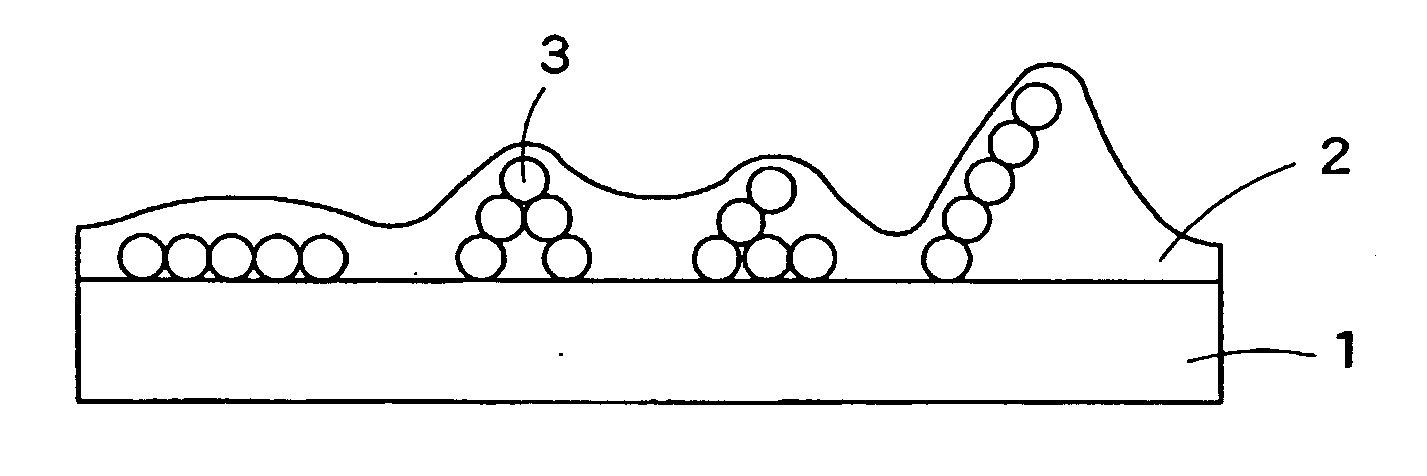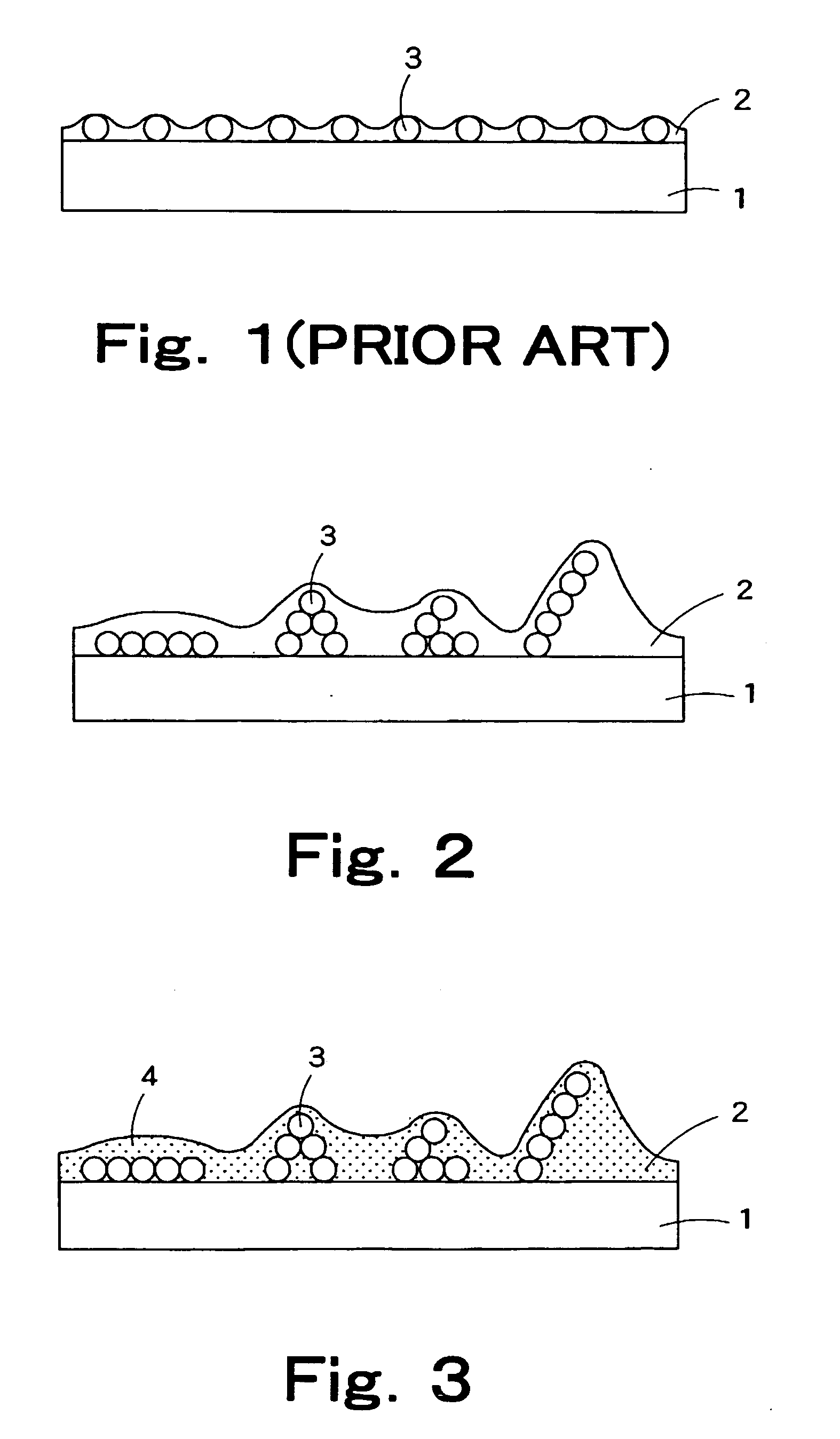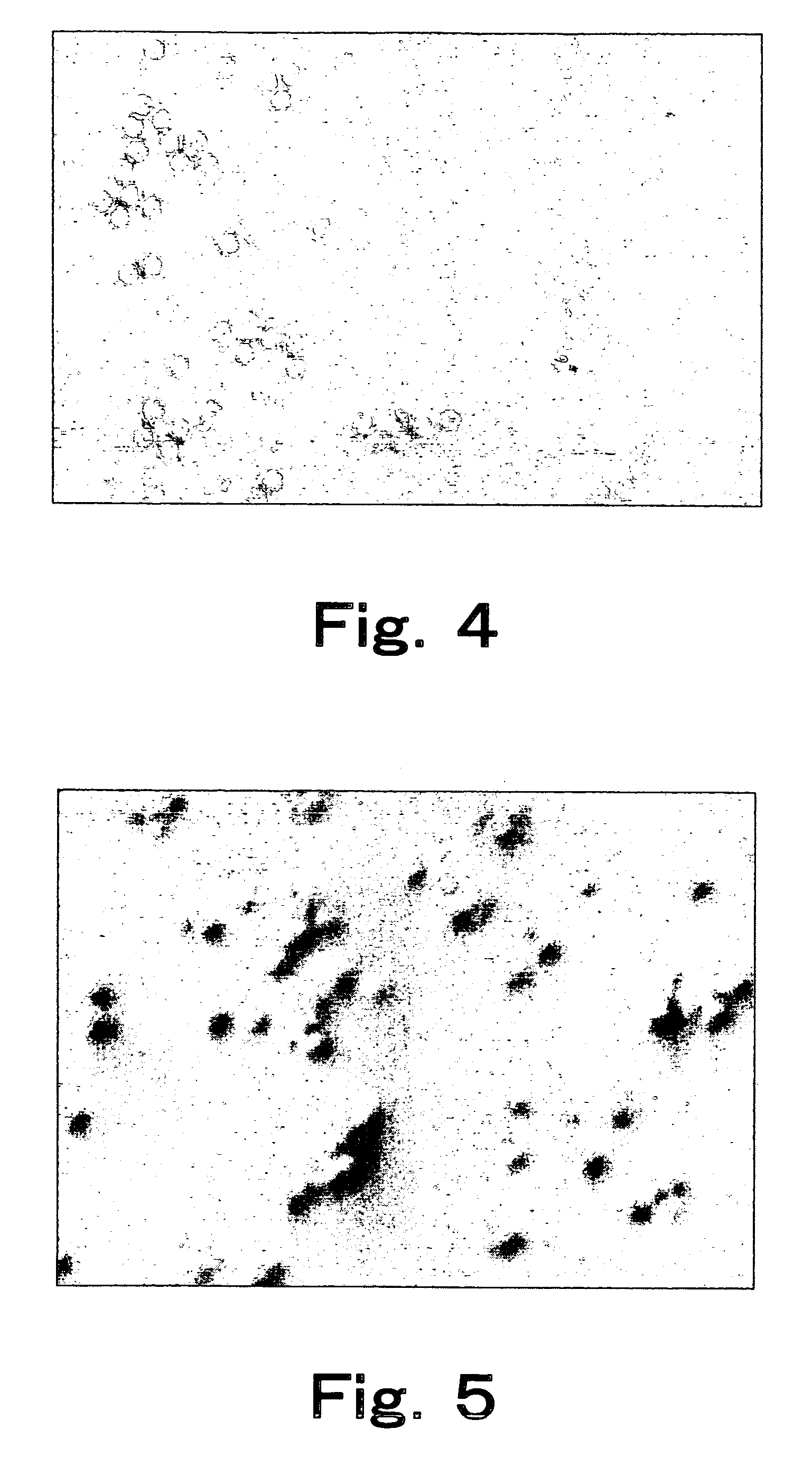Antiglare laminate
a technology of antiglare and laminate, applied in the field of antiglare laminate, can solve the problems of difficulty in meeting improvement requirements 1 to 4, lowering the visibility as the display was somewhat observed, and requiring an increase in the size of the antiglare laminate per se used as a surface body, etc., and achieves excellent antiglare properties, low haze value, and high level of sharpness.
- Summary
- Abstract
- Description
- Claims
- Application Information
AI Technical Summary
Benefits of technology
Problems solved by technology
Method used
Image
Examples
example 1
[0163] An 80 μm-thick triacetylcellulose film (TD80U, manufactured by Fuji Photo Film Co., Ltd.) was provided as a transparent substrate. Composition 1 for an antiglare layer was coated onto the film by a winding wire rod (Mayer bar) for coating, and the coated film was heat dried in an oven of 70° C. for one min to evaporate the solvent. Thereafter, under nitrogen purge (oxygen concentration: not more than 200 ppm), ultraviolet light was applied at an exposure of 100 mJ to cure the coating. Thus, a 6 μm-thick antiglare laminate was prepared. The light transparent first fine particles were acrylic beads having a small particle diameter, and the surface of the particles is hydrophilic. To form an aggregated part having a desired three-dimensional structure, a hydrophobic styrene acrylic polymer (molecular weight: 65,000) was added.
example 2
[0164] An antiglare laminate was prepared in the same manner as in Example 1, except that composition 2 for an antiglare layer was used. In composition 2 for an antiglare layer, acrylic beads having a hydrophobic surface (which is dispersible in toluene and are aggregated in methanol) and a particle diameter of 4.6 μm were used as the light transparent first fine particles.
example 3
[0165] An antiglare laminate was prepared in the same manner as in Example 1, except that composition 3 for an antiglare layer was used. In composition 3 for an antiglare layer, in order to form an aggregated part having a desired three-dimensional structure, the particle diameter of the light transparent first fine particles and the particle diameter of the light transparent second fine particles used were made different from each other, and the light transparent first and second fine particles were used as a mixed particle system.
PUM
| Property | Measurement | Unit |
|---|---|---|
| particle diameter | aaaaa | aaaaa |
| particle diameter | aaaaa | aaaaa |
| particle diameter | aaaaa | aaaaa |
Abstract
Description
Claims
Application Information
 Login to View More
Login to View More - R&D
- Intellectual Property
- Life Sciences
- Materials
- Tech Scout
- Unparalleled Data Quality
- Higher Quality Content
- 60% Fewer Hallucinations
Browse by: Latest US Patents, China's latest patents, Technical Efficacy Thesaurus, Application Domain, Technology Topic, Popular Technical Reports.
© 2025 PatSnap. All rights reserved.Legal|Privacy policy|Modern Slavery Act Transparency Statement|Sitemap|About US| Contact US: help@patsnap.com



